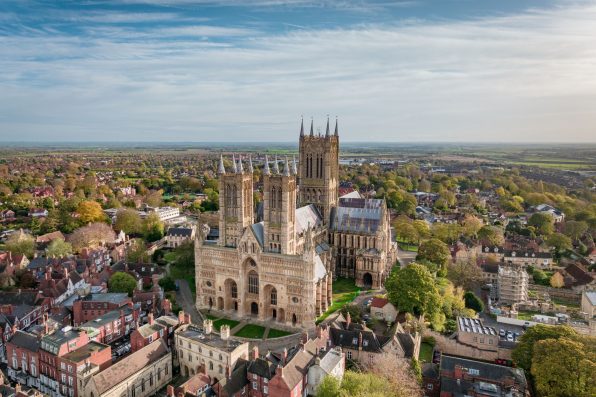A Recent Construction Project In The UK Led To The Discovery Of A 1,400-Year-Old Tomb Containing Over 20 People And Various Artifacts, Including Tools, Pottery, And Jewelry

In the United Kingdom, construction for an electricity project was taking place at an archaeological site, which led to the unearthing of a 1,400-year-old tomb containing the remains of more than 20 people.
Among the remains, there was a teenage girl and a child. A collection of artifacts, ranging from tools and pottery to delicate jewelry, was also uncovered.
The discoveries were made in an Anglo-Saxon cemetery in Lincolnshire, a county located in eastern England.
Construction workers came across the cemetery while digging along the route for Viking Link, a large energy project that aims to connect England and Denmark with an underground cable line so the two countries can share electricity.
According to lead osteoarchaeologist Jacqueline McKinley with the British archaeological organization Wessex Archaeology, Anglo-Saxon cemeteries were abundant across most of what is now England during the early Middle Ages.
However, during prior excavations, the focus was placed on the historical objects rather than the buried bodies. Osteoarchaeology is the study of human remains from archaeological sites.
The newly excavated burial site dates back to the sixth and seventh centuries A.D. during Britain’s Anglo-Saxon period, which spanned from 410 to 1066 A.D.
This period of time lasted for roughly 650 years, and it all began when the Roman legions left Britain, opening the doors for invaders to arrive, including people from Scotland, Ireland, and the Anglo-Saxons from northern Germany and Scandinavia.
These groups met little resistance from the inhabitants of the area since they had no effective ways of defending their land.

cloudvisual – stock.adobe.com – illustrative purposes only
The Anglo-Saxon period ended with the Battle of Hastings in 1066, when a conquest of the English throne by Duke William of Normandy took place, ushering in a new era of Norman rule.
Over 250 artifacts were recovered from the cemetery. These items, along with the individuals buried with them, were placed on top of a circular trench that was made sometime during the Bronze Age (2300 to 800 B.C.), indicating that the burial site had been established long before the Anglo-Saxon period started.
The teenage girl and child among the human remains were found lying on their sides. The body of the younger child was tucked against the teenager’s back.
The older girl was buried with two small gold pendants inlaid with garnet gemstones and a silver pendant with an amber mount. The grave also contained two turquoise glass beads and a brooch in the shape of a ring.
Researchers are still conducting studies to determine the ages and relationships of the two children. They also hope to reveal more information about the lives of the community that lived during these chapters of ancient history.
“Excitingly, here we can employ various scientific advancements, including isotopic and DNA analyses,” said McKinley.
“This will give us a far better understanding of the population, from their mobility to their genetic background and even their diet.”
Sign up for Chip Chick’s newsletter and get stories like this delivered to your inbox.
More About:News





